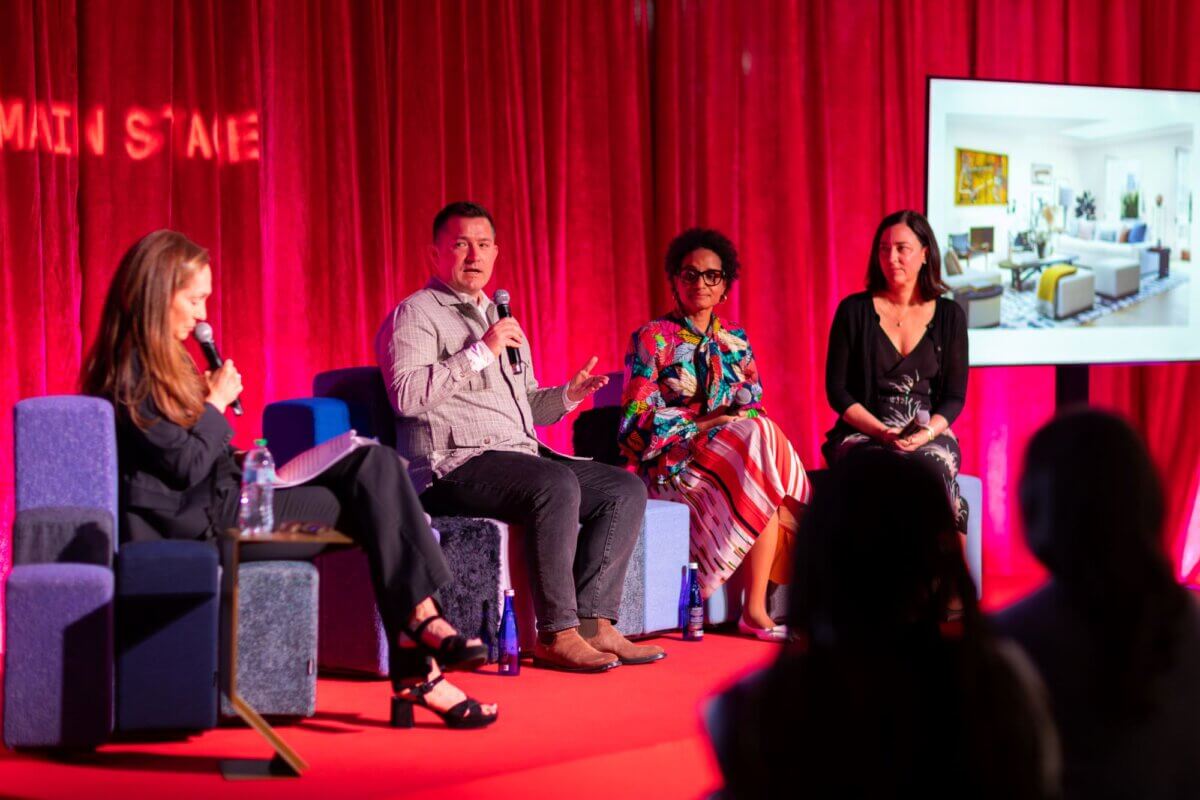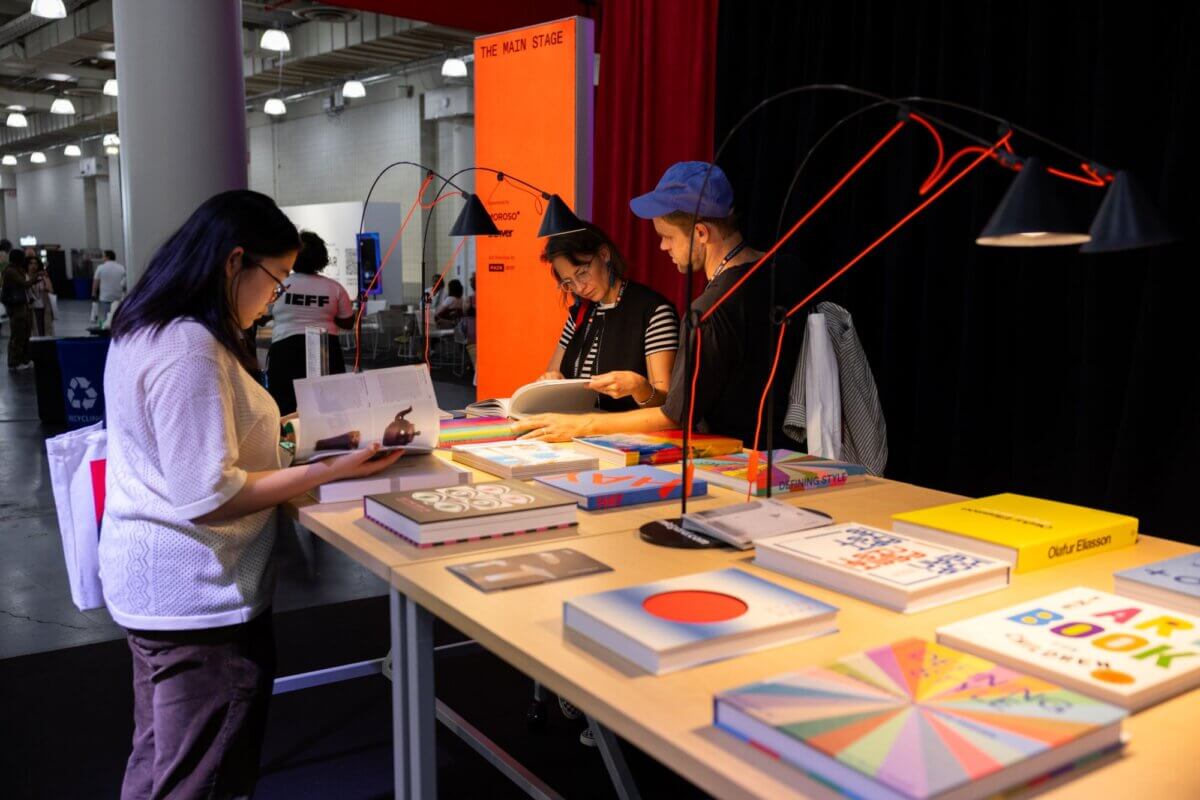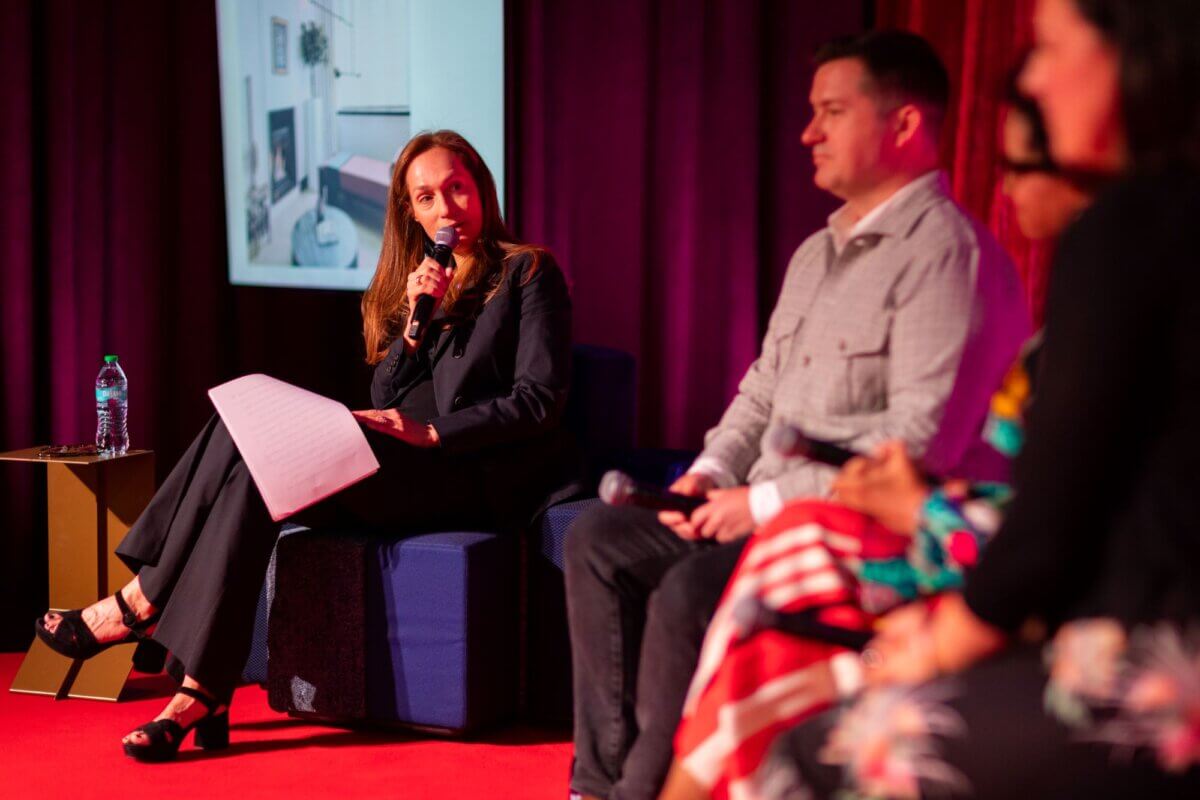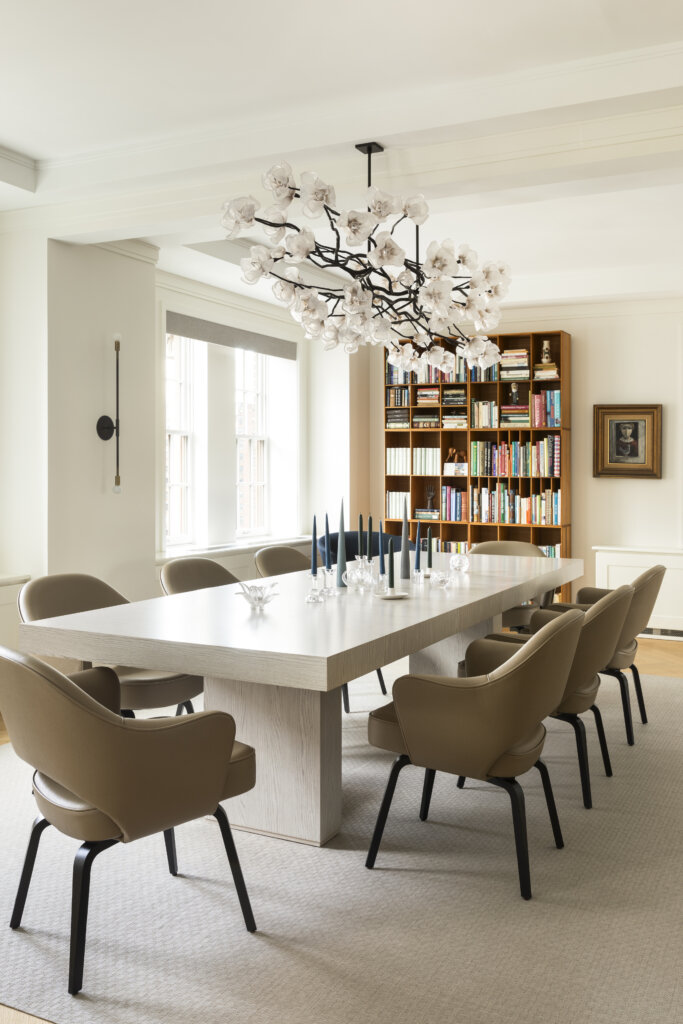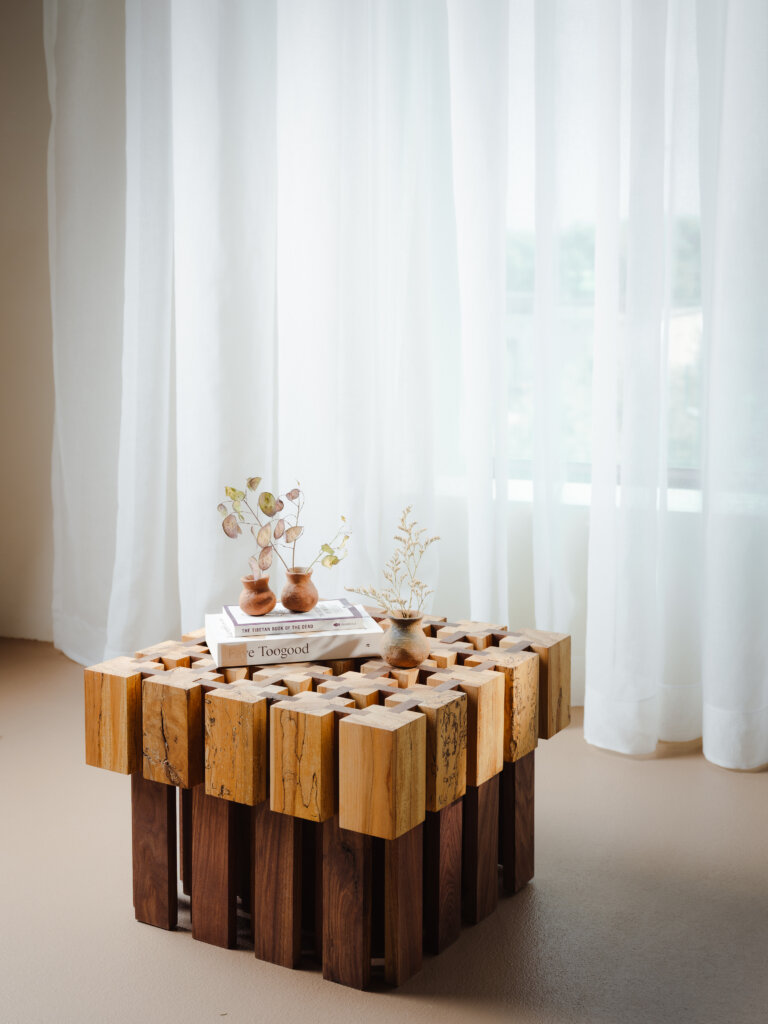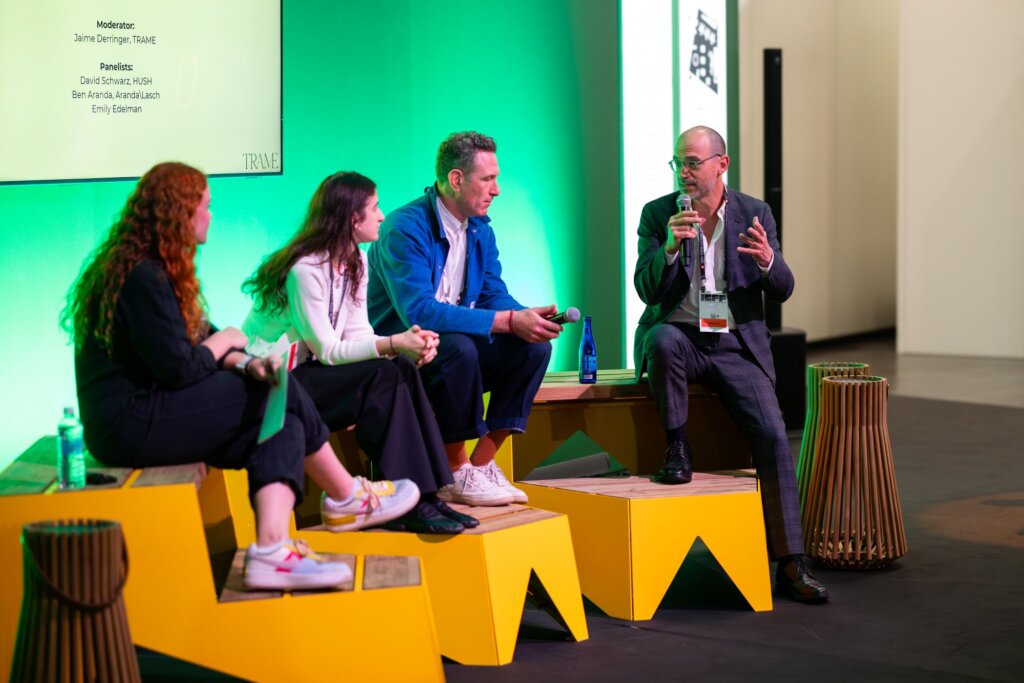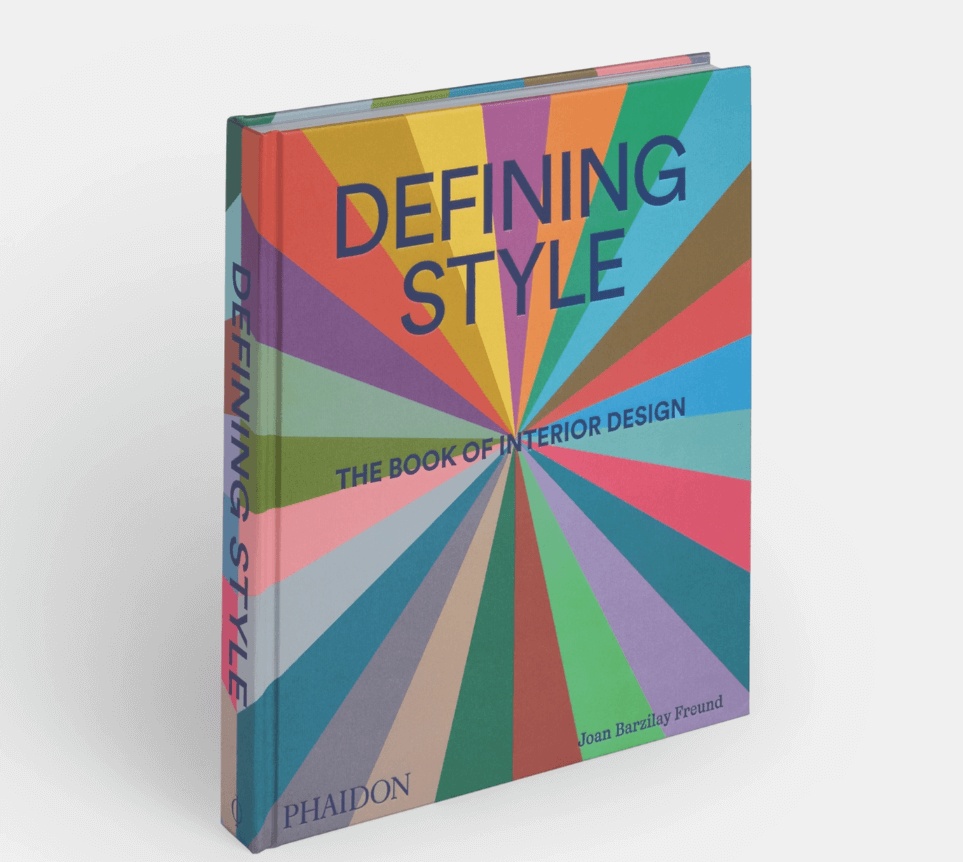
At this year’s ICFF, leading art, architecture, and design book publisher Phaidon marked the release of the new Defining Style: The Book of Interior Design compendium with a talk about where the interior design sector is heading. The title’s author Joan Barzilay Freund moderated an informal discussion with leading local talents Paris Forino, Nick Olsen, and Courtney McLeod, founding principal of the Right Meets Left Interior Design firm.
The comprehensive tome surveys the 25 styles currently defining the industry and serves as a kind of textbook—an entry point to these various historical, timeless, and contemporary inclinations. Revered practitioners like Studio Shamshiri, Laura Gonzalez, and Vincenzo De Cotiis make an appearance. Notable magazine editor Asad Syrkett’s introduction “sets the stage” with insights on the cultural value of the practice in this day and age.
“To read the book is to understand not just the ideas behind the styles of the various rooms featured and how one might go about replicating them in one’s own home, but it is also in some sense a book of short stories,” Barzilay Freund explained. “Defining Style offers 150 vignettes of how designers and clients working together figure out how to define the stylistic viewpoint of a home.”
After briefly introducing each of the speakers—their professional trajectory thus far and distinctive approaches—she began the conversation by asking each to describe the project of theirs that’s featured in the book.
Known for exuberant-color confident spaces that embrace bold patterns and a palpable sense of joy—as Barzilay Freund put it—McLeod described a Nolita, Manhattan loft she outfitted in 2020. Carried out during the height of the COVID-19 pandemic the project was a testament to the importance of client collaboration. “The apartment has a huge 40-foot-tall wall,” she said “And so, we decided to deck it out in an exuberant floral wall paper and it truly set the palette for the rest of the space.”
Australian-born talent Paris Farino described a Tribeca Loft she designed at the same time. “Her fondness for clean lines, rich surface materials, and soft muted colors brings a sense of approachable elegance and luminous continuity to her work,” Barzilay Freund described. “A delicious rose pink kitchen that she designed for this project appears in the book section on monochrome spaces.” For Farino, it was the second all pink project she had imagined. “It was the only brief I had,” the designer explained. “They let me do the rest.”
Olsen described the “short story” behind how he unexpectedly came upon his dream West Chelsea home. “It was a Greek revival townhouse that had really high ceilings and it had a decorative fireplace, everything I wanted. Sadly, all of the architectural detail from 1834, when it was built, had been ripped out. Because it had no architecture to speak of, all the furniture and objects had to be spirited, as you wrote in the chapter.” In her introduction, Barzilay Freund defined his practice as creating rooms that feel both grounded and whimsical due to the artful mix of antiques and contemporary work, along with surprising colors, surfaces, and decorative flourishes.
The author mentioned how all three would be capable of adopting any number of the styles highlighted in the book, those that are more commonly understood like minimalism and maximalism but also those that are more obscure like biophilia: rooms that are inspired by the images, colors and forms of nature. She also highlighted the concept of wunderkammers (cabinets of curiosity) filled to the brim with collected items and asked the three panelists if any other of their projects might fit into one of these categories.
Farino chimed in and spoke about a 50-apartment residential development, currently under development, called the Amalfi and that she felt would fit in well with the Mediterranean theme. “We’re embracing these beautiful archways and colonnades. I’d never thought I’d be doing something Mediterranean, but we add our stamp to it in our hand. We were able to balance proportion and material and it’s looking very good.”
Olsen spoke about a client requesting a “steampunk” look—not a chapter in the book as he noted. “I was like, oh yeah, steam punk. I know. And then I went home and googled-it. The result ended up being my version of steam punk. Just like you said, you have to put your own hand to it. I had to do my best with that directive.
MacLoed spoke about her affinity for maximalism. “Clearly I can’t get enough of color and pattern. We worked on a great project in Washington D.C. and covered a triple height stairwell in egg yolk yellow lacquer. It was one of my favorite spaces ever. I stool the technique for my own, much tinier, foyer. It was just clients who were like: ‘just do your thing.’”
Joan Barzilay Freund then probed each panelist on the idea that a process—a set of creative and practical procedures in handling the clients—can supersede the demand for a specific style.
“After initially talking to our client, we do a mood board: an array of images of our work, other designer’s work; ceilings, moldings, etc. and then we just talk to the client again,” Farino outlined. “They talk about the pictures, they tell us things they like and don’t like and that’s a crucial part. After that meeting, we really understand what they want and don’t like; the tone that we need to set. So it’s quite kind of simple, but it works.”
MacLeod concurred. For her, going through images with a client is powerful. It gets them excited, uncovering things they didn’t know they liked before. “At the same time, we are stressing from day one that we’re going to be super creative and great, but we’re also really taking care of your money. It’s a vital thing to say in establishing the trust to move forward,” she added.
Olsen spoke about the importance of creating clear storylines after taking into consideration all of the constraints of space and a client’s budget. “It’s kind of like packing for a vacation. They have an aspirational narrative about how they want to live and how they want to use their hopefully beautiful home. And then there’s the reality that the kids need a 12 by 12 foot area and there’s 18-thousands toys. So you try to kind of plan for the reality of their lives, but also, hey, do you want to have big dinner parties for 14 people? And that all for me goes into a furniture plan. I think a designer’s dream is to have this blank canvas with beautiful architecture and a collaboration with a great architect and maybe landscape architect. But in reality, I mean we’re sifting through these people’s lives and they often come with things that they’re not good at parting with. So I’m measuring, I’m cataloging, I’m seeing, well, grandpa’s chest from 1892 is not my favorite, but maybe it’ll fit in the guest bedroom. You can’t just light a match.”
The conversation then went on to address the issues of having the confidence—knowing when—to push back—objectively explaining why a desired outcome might not work. Barzilay Freund cited different examples of ‘tricks’ other interior designers have used to bring out the personality and honest taste of a client, reiterating the age-old adage that the discipline is essentially psychological therapy. As expressed by all three panelists, it comes down to it being a balancing act; tempering a client’s requirements with their expertise; why they were hired in the first place.
The author then put forward another prompt: if there was a style in the book that the three designers hadn’t attempted yet but wanted to. Most mentioned delving into minimalism as a terrifying prospect. Barzilay Freund went on to ask about the importance of historical reference, the challenge of gauging if one is drawn to something because it’s new or familiar. Overall for her, the measure of good interior design, perhaps unlike fashion, is longevity. She ended by steering the conversation toward the topics of curation—commisioning site specific designs and art pieces for a project—and the two-way benefits of mentorship—helping up-and-comers get started in the industry.
During a question and answer section, audience members asked about a dream design object each would want to incorporate into a project, their favorite cost-effective materials, and pet-friendly solutions.
More from ICFF:
ICFF 2025 Highlights: Creativity, Innovation and Connection in NYC
Original Thinkers: Designing with Purpose, Passion, and Integrity
Save the date for ICFF 2026, May 17-19, 2026
